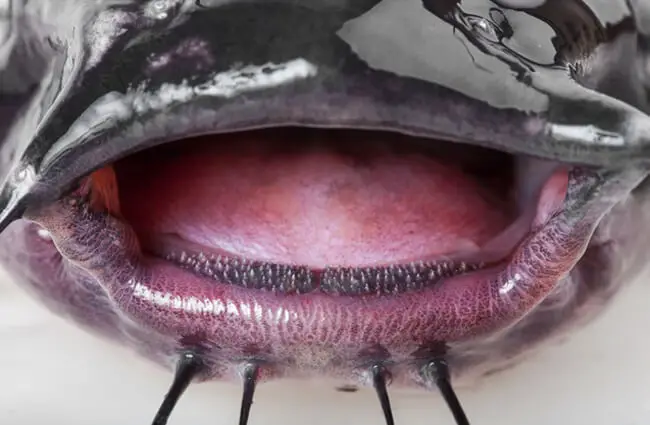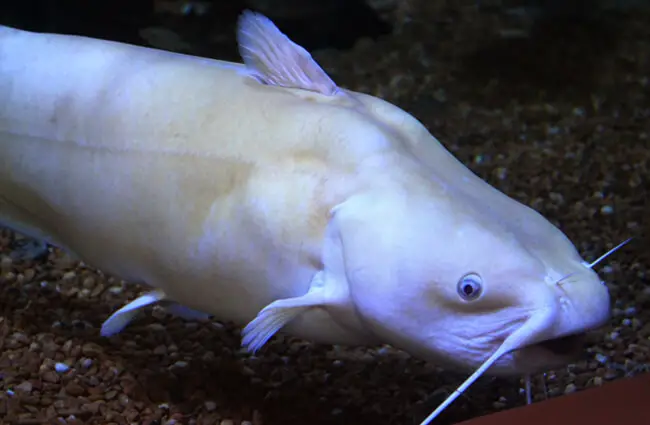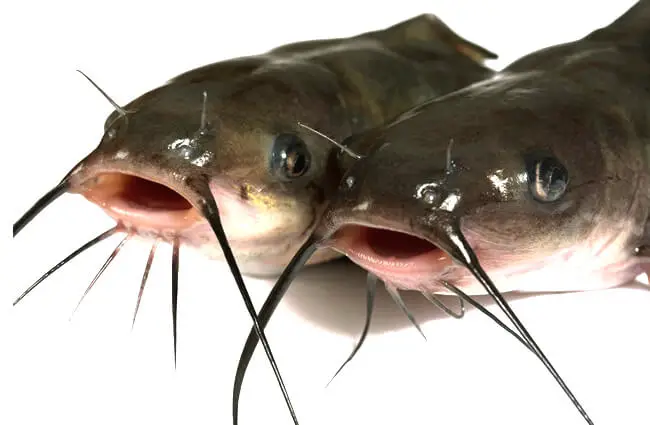Beneath the shimmering surface of North American freshwater systems, a true aquatic icon thrives: the Channel Catfish, scientifically known as Ictalurus punctatus. This remarkable fish, instantly recognizable by its sleek, spotted body and distinctive barbels, is far more than just a popular catch for anglers. It is a vital component of its ecosystem, a testament to evolutionary adaptability, and a creature with a fascinating life story waiting to be explored. From its humble beginnings as a bottom-dweller to its significant role in human culture and aquaculture, the Channel Catfish offers a captivating glimpse into the intricate world of freshwater biology.
Join us on an exploration of this ubiquitous and intriguing species, uncovering its secrets from its preferred haunts to its complex reproductive rituals, and understanding its profound impact on both the natural world and human society.
The Channel Catfish: An Aquatic All-Rounder
The Channel Catfish is North America’s most widely distributed catfish species, celebrated for its sporting qualities and culinary appeal. Its common name, “Channel Catfish,” hints at its preference for deeper channels in rivers and lakes, while “catfish” refers to the prominent, whisker-like barbels around its mouth, which resemble a cat’s whiskers. These barbels are not just for show; they are highly sensitive chemosensory organs, crucial for detecting food in murky waters.
Typically, Channel Catfish exhibit a slender body, deeply forked tail, and smooth, scaleless skin. Their coloration can vary, ranging from olive-green to slate-gray on the back and sides, fading to a silvery-white belly. Younger fish often display distinct dark spots on their sides, which tend to fade as they mature. Adults can reach impressive sizes, with the largest specimens exceeding 50 pounds, though most caught by anglers are in the 1 to 10-pound range. Their average lifespan in the wild is around 6 to 7 years, but some individuals can live for over 15 years under optimal conditions.

Where the Channels Flow: Habitat and Distribution
The Channel Catfish is a true freshwater specialist, native to the central and eastern United States, as well as parts of southern Canada and northern Mexico. Its natural range extends from the Great Lakes basin and the St. Lawrence River south to the Gulf Coast states, and west into the Rocky Mountain foothills. However, due to extensive stocking programs for sport fishing and aquaculture, it has been introduced and established in many other parts of the world, including Europe, Asia, and South America.
This adaptable species thrives in a wide variety of aquatic environments. Preferred habitats include:
- Rivers and Streams: They favor moderate to large rivers with slow to moderate currents, often congregating in deeper channels, pools, and areas with submerged cover like logs, rocks, and undercut banks.
- Lakes and Reservoirs: Channel Catfish are also abundant in large lakes and reservoirs, particularly those with muddy or sandy bottoms and plenty of structure.
- Ponds: They can be found in larger ponds, especially those with good water quality and adequate depth.
They are remarkably tolerant of varying water conditions, including turbidity, temperature fluctuations, and even lower oxygen levels, which contributes to their widespread success. However, they generally prefer warmer waters, typically between 70 to 85 degrees Fahrenheit (21 to 29 degrees Celsius), for optimal growth and activity.

The Omnivorous Appetite: What’s on the Menu?
Channel Catfish are opportunistic omnivores, meaning they will eat almost anything available to them. This broad diet is another key to their ecological success and adaptability. Their diet changes somewhat as they grow:
- Juveniles: Younger catfish primarily feed on small aquatic insects, crustaceans like copepods and cladocerans, and zooplankton.
- Adults: As they mature, their diet expands significantly to include a wider array of items:
- Invertebrates: Larger aquatic insects, insect larvae, crayfish, snails, and mussels.
- Fish: Small baitfish, minnows, and the fry of other fish species.
- Plant Matter: Algae, seeds, and other plant debris, though this forms a smaller portion of their diet.
- Detritus: Decaying organic matter found on the bottom.
- Carrion: Dead fish or other animals, which they locate using their acute sense of smell.
Their excellent sense of smell and taste, facilitated by their barbels and taste buds distributed across their entire body, allows them to locate food efficiently even in dark or turbid waters. This makes them highly effective scavengers and predators within their aquatic environments.

The Dance of Life: Mating and Reproduction
The reproductive cycle of the Channel Catfish is a fascinating display of instinct and parental care. Spawning typically occurs in late spring or early summer when water temperatures consistently reach between 70 to 80 degrees Fahrenheit (21 to 27 degrees Celsius).
- Nest Selection: Male Channel Catfish are responsible for selecting and preparing a nesting site. They prefer secluded, dark cavities or depressions, such as hollow logs, rock crevices, undercut banks, or even artificial structures like old tires or drainage pipes. The male meticulously cleans the chosen site.
- Courtship and Spawning: Once the nest is ready, the male attracts a female. Courtship involves nudging and circling. The female then deposits her eggs in a sticky, gelatinous mass within the nest. A single female can lay anywhere from 2,000 to 20,000 eggs, depending on her size. The male immediately fertilizes the eggs.
- Parental Care: After spawning, the female typically leaves the nest, and the male takes on the sole responsibility of parental care. He guards the eggs fiercely, fanning them with his fins to ensure proper oxygenation and removing any debris or unfertilized eggs. This dedicated care continues until the eggs hatch, usually within 5 to 10 days, depending on water temperature.
- Fry Development: Once hatched, the tiny fry remain in the nest for several days, absorbing nutrients from their yolk sacs. The male continues to guard them until they are strong enough to disperse and forage for themselves, typically a week or two after hatching. This strong paternal care significantly increases the survival rate of the offspring.

Deeper Dives: Expert Insights into Channel Catfish
An Ancient Lineage: Evolutionary History
The evolutionary history of catfish, including the Channel Catfish, stretches back millions of years. Catfish belong to the order Siluriformes, a diverse group of ray-finned fish characterized by their barbels and lack of scales (or reduced scales). Fossil evidence suggests that early catfish ancestors emerged during the Cretaceous period, over 100 million years ago. The family Ictaluridae, to which the Channel Catfish belongs, is endemic to North America, indicating a long evolutionary journey within the continent’s freshwater systems.
Key evolutionary adaptations that have contributed to the Channel Catfish’s success include:
- Chemosensory System: The development of highly sensitive barbels and widespread taste buds allowed them to thrive in turbid, low-light environments where sight is less effective for foraging.
- Scaleless Skin: While most fish have scales for protection, the smooth, tough skin of catfish may offer advantages in navigating tight spaces or muddy bottoms, and it is often covered in a protective mucus layer.
- Dorsal and Pectoral Spines: Many catfish, including the Channel Catfish, possess sharp, serrated spines in their dorsal and pectoral fins. These can be locked into an erect position, serving as a formidable defense against predators. They can inflict painful wounds, and some species even have venom glands associated with these spines, though the Channel Catfish’s “sting” is generally not venomous but can be irritating.
- Air Bladder Adaptation: Their well-developed air bladder not only aids in buoyancy but also plays a role in sound production and reception, allowing for communication within their environment.

Ecosystem Contributions and Interactions
Channel Catfish play a multifaceted role in their aquatic ecosystems, acting as both predators and scavengers, thereby influencing nutrient cycling and food web dynamics.
- Predator: As they mature, Channel Catfish become significant predators of smaller fish, crustaceans, and aquatic insects. This helps to regulate populations of these species and maintain ecological balance.
- Scavenger: Their omnivorous and opportunistic feeding habits mean they readily consume carrion and detritus. This scavenging behavior is crucial for cleaning up organic matter, preventing its accumulation, and recycling nutrients back into the ecosystem.
- Prey: While formidable, Channel Catfish are not without their own predators, especially when young. Larger predatory fish, such as bass and pike, as well as birds of prey like ospreys and eagles, and even mammals like otters, will prey on Channel Catfish. Their defensive spines offer some protection, but juveniles are particularly vulnerable.
- Habitat Engineers: Their nesting activities, particularly the excavation of cavities, can subtly alter substrate and provide microhabitats for other organisms.

Channel Catfish and Humanity: A Cultural and Economic Link
The relationship between Channel Catfish and humans is long-standing and deeply ingrained in North American culture, particularly in the southern United States.
- Sport Fishing: Channel Catfish are immensely popular sport fish. Anglers appreciate their strong fighting ability and the challenge of locating them. Catfishing is a cherished pastime, often associated with family outings and traditional cooking methods.
- Commercial Fishing and Aquaculture: Beyond recreation, Channel Catfish are a significant commercial species. They are extensively farmed in aquaculture operations, particularly in the southern U.S., making them one of the most important aquaculture products in the country. This industry provides a stable source of protein and supports numerous jobs.
- Culinary Delicacy: Fried catfish, often served with hushpuppies and coleslaw, is a quintessential Southern dish. Its mild, flaky white meat is highly prized.
- Ecological Management: Channel Catfish are often stocked in ponds and lakes to improve fishing opportunities and to help manage aquatic ecosystems, sometimes by controlling populations of nuisance species.
Conservation Status
Globally, the Channel Catfish is classified as “Least Concern” by the IUCN (International Union for Conservation of Nature). Its wide distribution, adaptability, and successful aquaculture make it a robust species. However, local populations can face threats from habitat degradation, pollution, and overfishing in specific areas. Sustainable fishing practices and responsible aquaculture are crucial for ensuring the continued health of both wild and farmed populations.
Fascinating Facts About Channel Catfish
Here is a collection of intriguing facts that highlight the unique characteristics of the Channel Catfish:
- Taste Buds Everywhere: Channel Catfish have an extraordinary number of taste buds, estimated to be over 100,000, distributed not just in their mouth but also on their barbels, fins, and even their entire body surface. This allows them to “taste” their surroundings and locate food with incredible precision.
- Nocturnal Hunters: While they can be active during the day, Channel Catfish are primarily nocturnal, using their superior senses of smell and touch to navigate and hunt in the dark.
- Sound Producers: Catfish can produce sounds, often described as grunts or croaks, by vibrating their swim bladder. These sounds are believed to be used for communication, especially during spawning or when alarmed.
- Color Changing Ability: Their skin coloration can change slightly to adapt to their surroundings, providing a degree of camouflage.
- Longevity: While 6-7 years is typical, the oldest recorded Channel Catfish lived for over 40 years in captivity.
- Record Breakers: The world record Channel Catfish caught by rod and reel weighed an astounding 58 pounds.
- Aquaculture Powerhouse: The Channel Catfish is the most farmed fish in the United States, dominating the domestic aquaculture industry.
Practical Guidance for Channel Catfish Enthusiasts
Finding Channel Catfish in the Wild: A Guide for Animal Lovers
For those hoping to observe Channel Catfish in their natural habitat, understanding their preferences is key:
- Location: Focus on larger rivers, lakes, and reservoirs in their native range. Look for areas with deeper water, moderate currents, and plenty of cover.
- Time of Day: While they can be seen during the day, your best chance for observation is often at dawn, dusk, or even at night, when they are most active.
- Identifying Features: Look for their distinctive forked tail, smooth skin, and barbels. Younger fish will have more prominent spots.
- Observation Tips:
- Use polarized sunglasses to reduce glare on the water’s surface.
- Look for signs of activity, such as subtle movements in the water near submerged logs or undercut banks.
- In clear water, they might be visible cruising along the bottom or near structure.
- Be patient and quiet; sudden movements can scare them away.
Encountering a Channel Catfish in the Wild: What to Do (and Not Do)
If you are a hiker or simply enjoying nature and happen upon a Channel Catfish, perhaps stranded or caught by an angler, here’s what to consider:
- Observe from a Distance: If the fish is in the water and appears healthy, simply observe it without disturbing its natural behavior.
- Avoid Handling (Unless Necessary): Channel Catfish possess sharp, serrated spines on their dorsal and pectoral fins. These can inflict painful punctures. If you must handle one (e.g., to release it if caught), use thick gloves and grasp it firmly but gently behind the head, avoiding the spines.
- Never Harass: Do not poke, prod, or attempt to move a healthy fish from its environment.
- Stranded Fish: If you find a Channel Catfish stranded out of water, assess the situation. If it is clearly distressed and can be safely returned to water nearby, you might consider doing so with extreme caution, using gloves and minimizing its time out of water. However, if it appears injured or has been out of water for an extended period, its chances of survival are low. Contact local wildlife authorities if you are unsure or if the situation seems complex.
Caring for Channel Catfish in Captivity: A Zookeeper’s Guide
For zookeepers or aquarists managing Channel Catfish, specific care requirements ensure their health and well-being:
- Tank Size: Channel Catfish grow large, so they require spacious aquariums or ponds. A minimum of 75-100 gallons for a single adult is often recommended, with significantly larger volumes for multiple fish or larger specimens.
- Water Quality:
- Temperature: Maintain water temperatures between 70-85°F (21-29°C).
- pH: A neutral to slightly alkaline pH (6.5-8.0) is ideal.
- Ammonia/Nitrite/Nitrate: Excellent filtration is crucial to keep ammonia and nitrite at zero and nitrates low, as catfish are sensitive to poor water quality. Regular water changes are essential.
- Oxygenation: Provide good aeration, as while tolerant of lower oxygen, optimal levels are best for health.
- Substrate and Decor:
- Substrate: A soft, sandy, or fine gravel substrate is preferred, as they enjoy rooting around on the bottom.
- Cover: Provide plenty of hiding spots and enrichment, such as large PVC pipes, ceramic pots, smooth rocks, or artificial caves, to mimic their natural preference for secluded nesting and resting sites.
- Diet:
- Feed a high-quality, sinking pellet specifically formulated for carnivorous or omnivorous fish.
- Supplement with a variety of foods: earthworms, bloodworms, shrimp, small pieces of fish, and even some vegetable matter.
- Feed once or twice daily, offering only what they can consume in a few minutes to avoid overfeeding and water pollution.
- Compatibility: Channel Catfish can be kept with other large, robust, non-aggressive fish that are too big to be eaten. Avoid housing them with very small fish or highly territorial species.
- Health Monitoring: Regularly observe for signs of stress or illness, such as lethargy, clamped fins, unusual spots, or changes in appetite. Quarantine new fish before introducing them to an established tank.
- Avoid:
- Overcrowding, which leads to stress and poor water quality.
- Sharp or abrasive decorations that could injure their sensitive skin.
- Feeding exclusively on a single type of food, which can lead to nutritional deficiencies.
- Sudden changes in water parameters.
Conclusion
The Channel Catfish, Ictalurus punctatus, is a testament to nature’s ingenuity and adaptability. From its distinctive whiskered face to its crucial role in freshwater ecosystems, this fish offers a wealth of knowledge for students, aspiring zoologists, and nature enthusiasts alike. Its journey from a bottom-dwelling scavenger to a celebrated sport fish and aquaculture staple highlights its enduring connection with both the wild and human culture.
Understanding the Channel Catfish not only enriches our appreciation for aquatic life but also underscores the importance of conserving our freshwater resources. So, the next time you see a river flow or a lake shimmer, remember the silent, whiskered guardian beneath the surface, diligently playing its part in the grand tapestry of life.

![Red Angus Closeup of a beautiful Red Angus cowPhoto by: U.S. Department of Agriculture [pubic domain]https://creativecommons.org/licenses/by/2.0/](https://animals.net/wp-content/uploads/2020/03/Red-Angus-4-238x178.jpg)




![Red Angus Closeup of a beautiful Red Angus cowPhoto by: U.S. Department of Agriculture [pubic domain]https://creativecommons.org/licenses/by/2.0/](https://animals.net/wp-content/uploads/2020/03/Red-Angus-4-100x75.jpg)

